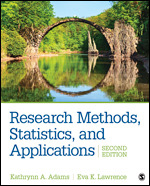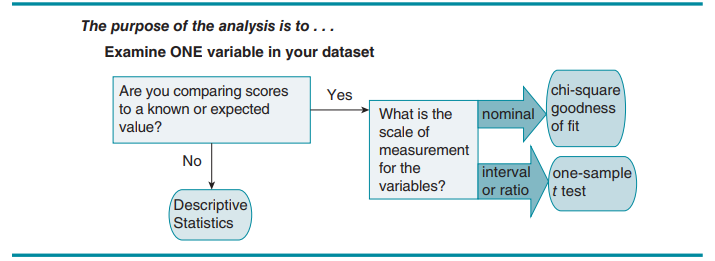Decision Tree to Examine Variable in Samples
Below is a short summary and overview of chapter seven in Dr. Kathryn A. Adams book entitled "Research Methods, Statistics and Application". This overview highlights a decision processing tool that is useful when examining variables in a qualitative sample.
First, the one-sample t test and the chi-square goodness of fit are used when you are examining one variable at a time in your sample, rather than looking at relationships between variables. Second, they are both inferential statistics that allow you to determine if the score for that one variable you are examining in your sample is significantly different than a population or expected value. Third, the scale of measurement of the variable determines which test to use (see Figure 7.2). And finally, inferential statistics are one way of making sense of your data, but they are not the only way. When interpreting your results, remember to also consider the magnitude of the difference (the effect size), the confidence interval, and the overall context and meaning of the numbers.[su_box title="Decision Tree When Examining One Variable in Your Sample" style="default" box_color="85C6E2" title_color="85C6E2" radius="3" class=""]

This material is drawn from the SAGE Publishing text, Research Methods, Statistics, and Applications, by Kathrynn Adams and Eva Lawrence. The book consistently integrates methods and statistics to prepare students for both graduate work and critical analysis of research as professionals and informed citizens; while also maintaining the conversational writing style, multiple examples, and hands-on applications of key concepts.

